This morning we decided to have a fairly relaxed morning by heading over to Osaka Castle and the Osaka History Museum.
Osaka Castel was founded by the Tokugawa shogunate in 1628. The Tokugawa shogunate ordered 57 feudal lords, including the Nabeshima Family of Saga, the Maeda family of Kanazawa, the Ikeda Family of Tottori, and the Kuroda Family of Fukuoka to participate in the construction work. The imposing fortress has large stone walls, seven corner turrets for defence – but several of these turrets were burned down during the Meiji Restoration and others were lost during World War II… the only original parts of the castle are the first and sixth turrets (the Ichiban-yagura and Rokuban-yagura), the rest have all been rebuilt.
The outer bailey of Osaka Castle is surrounded by an enormous moat with two main entrances – the Ote-guchi Entrance in the West and the Tamatsukuri-guchi Entrance in the East. The stone wall is about 2km in length in total and the maximum width of the moat is an imposing 75m wide.
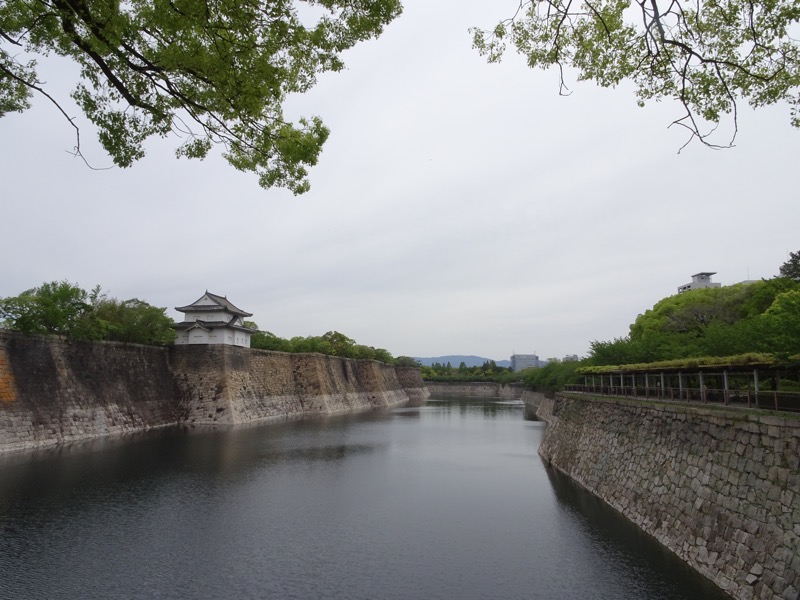
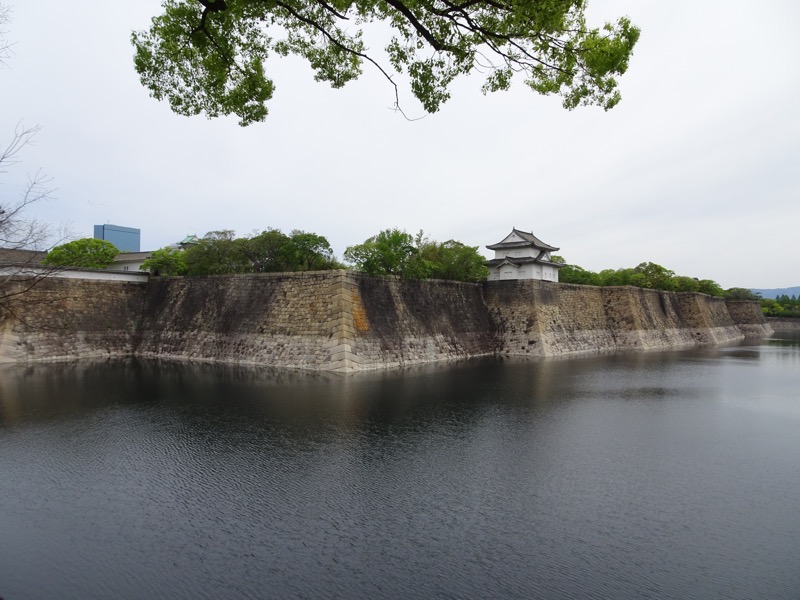 Some cool artworks depicting the Castle over the various periods, unfortunately, all the descriptions were :
Some cool artworks depicting the Castle over the various periods, unfortunately, all the descriptions were :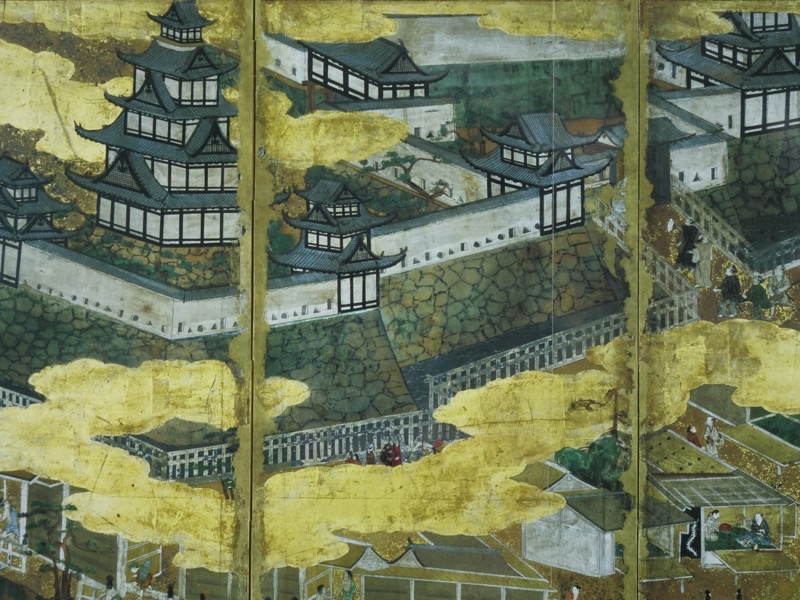
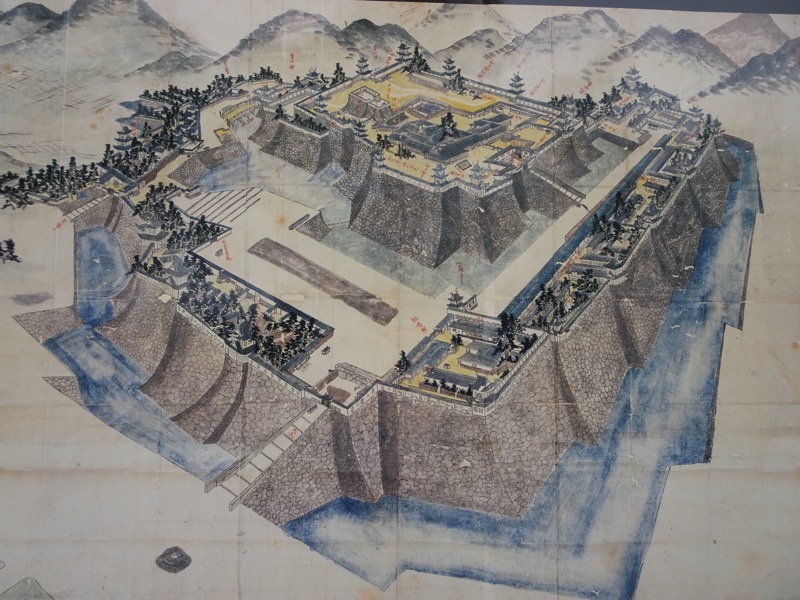
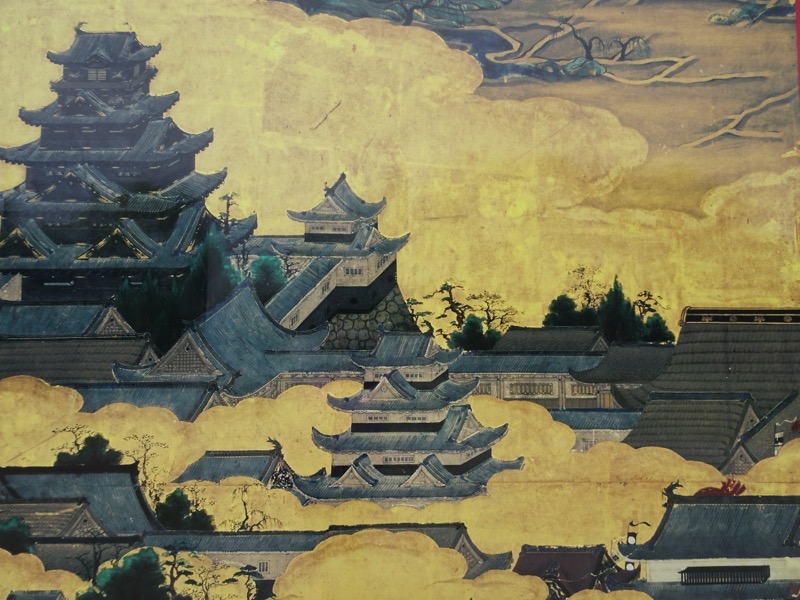
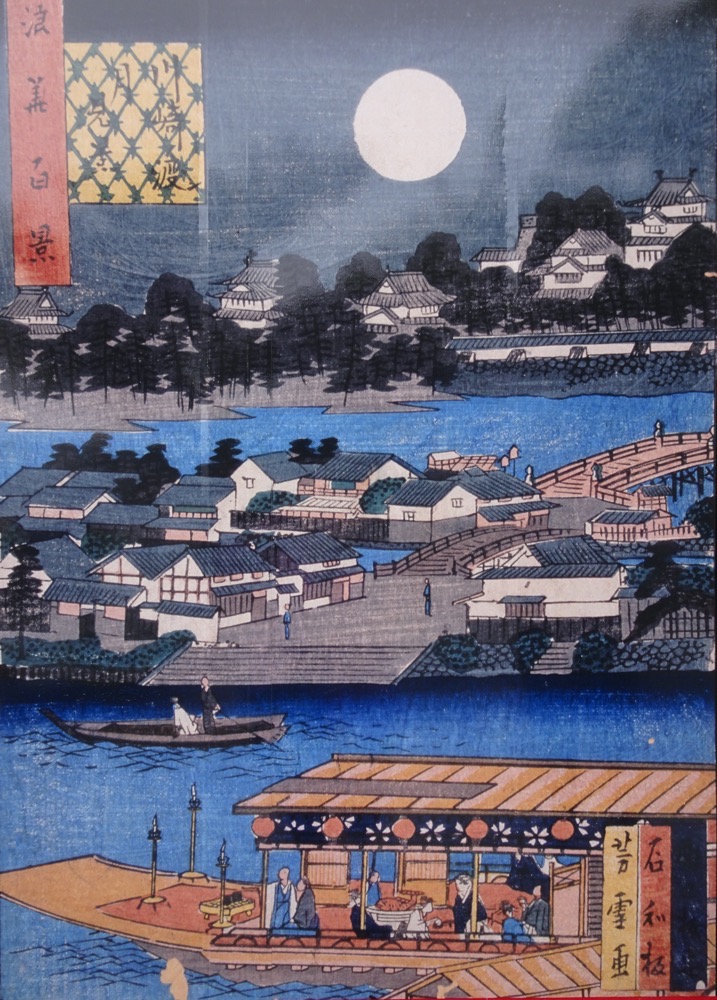
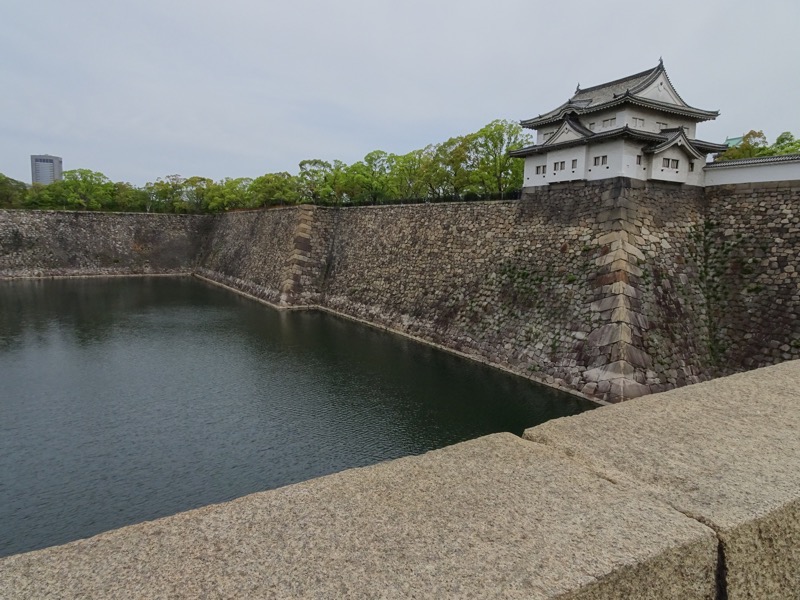
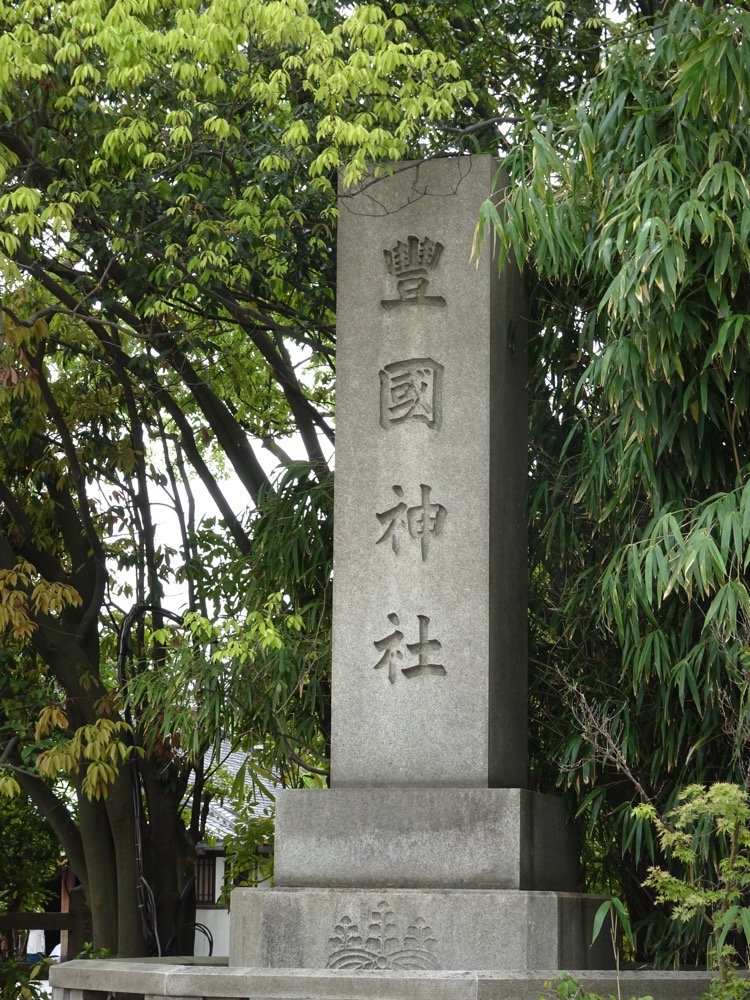
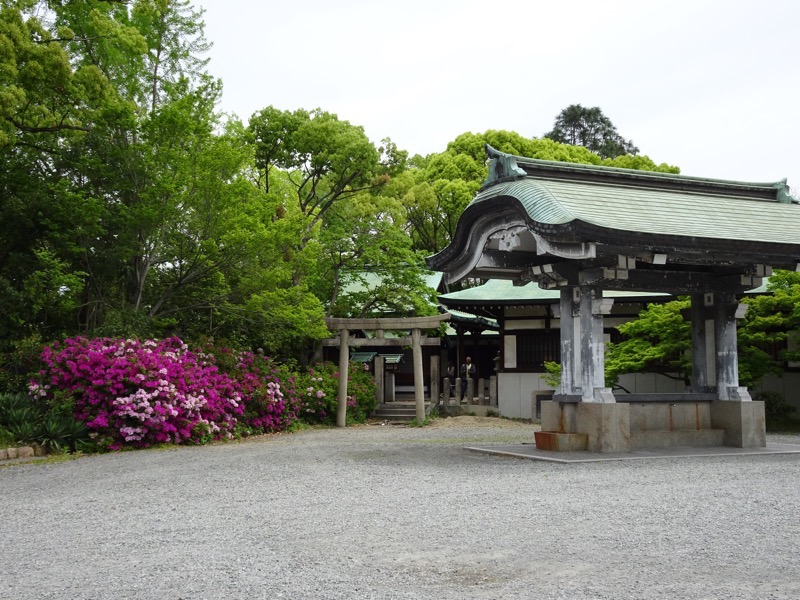 The Shokanzeonbosatsu Temple inside the grounds of Osaka Castle.
The Shokanzeonbosatsu Temple inside the grounds of Osaka Castle.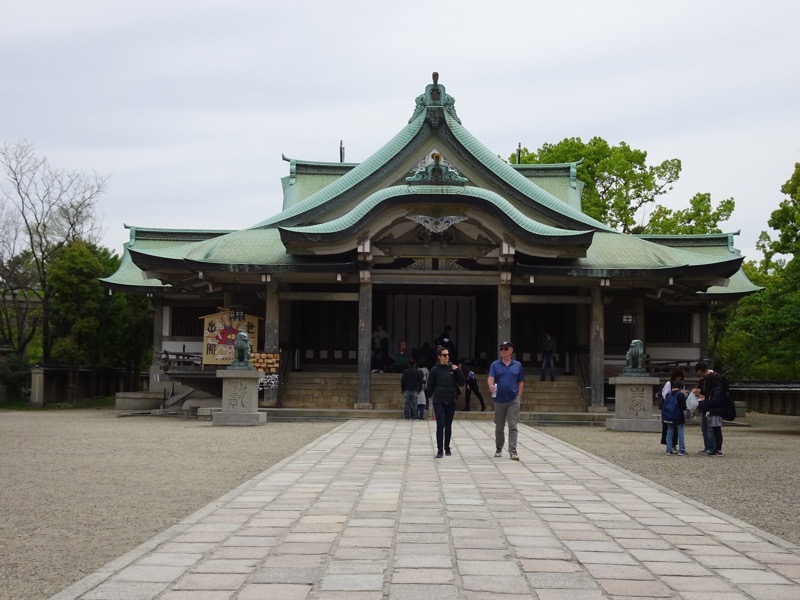
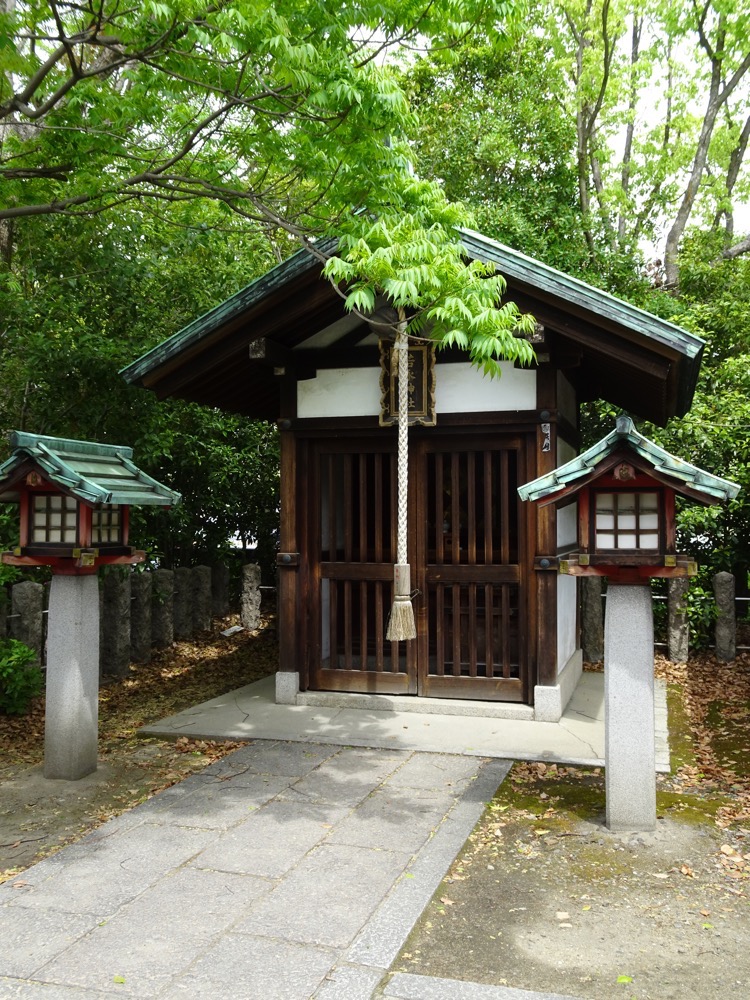
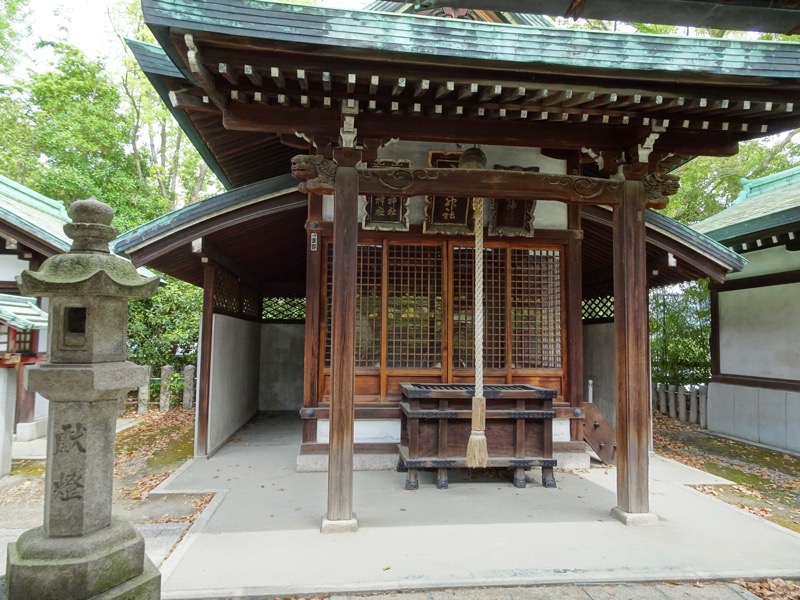
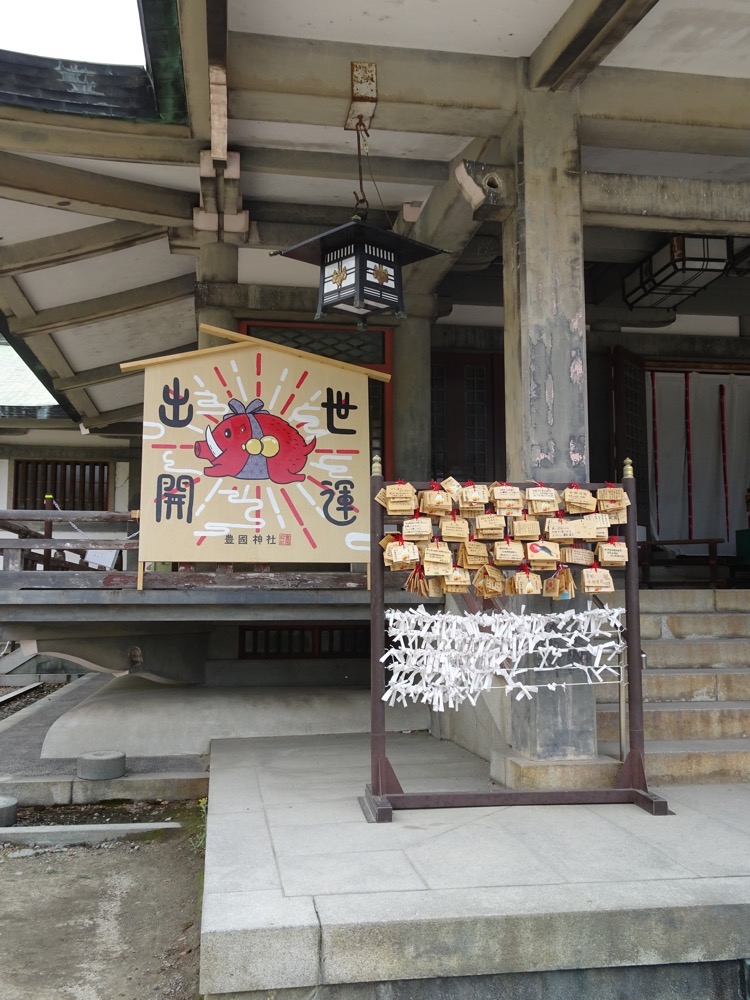
 The Main Tower of Osaka Castle Park was built in by Hideyoshi Toyotomi in 1583, however, it was not completed until after his death. During the Summer War of 1615, (Toyotomi family vs Tokugawa family) the tower was burned down and rebuilt in 1629. Unfortunately, it was destroyed again in 1665 when it was burned to the ground after being struck by lightning. In 1931, through the donations of the citizens of Osaka, the main town was reconstructed – which is the tower able to be seen today.
The Main Tower of Osaka Castle Park was built in by Hideyoshi Toyotomi in 1583, however, it was not completed until after his death. During the Summer War of 1615, (Toyotomi family vs Tokugawa family) the tower was burned down and rebuilt in 1629. Unfortunately, it was destroyed again in 1665 when it was burned to the ground after being struck by lightning. In 1931, through the donations of the citizens of Osaka, the main town was reconstructed – which is the tower able to be seen today. 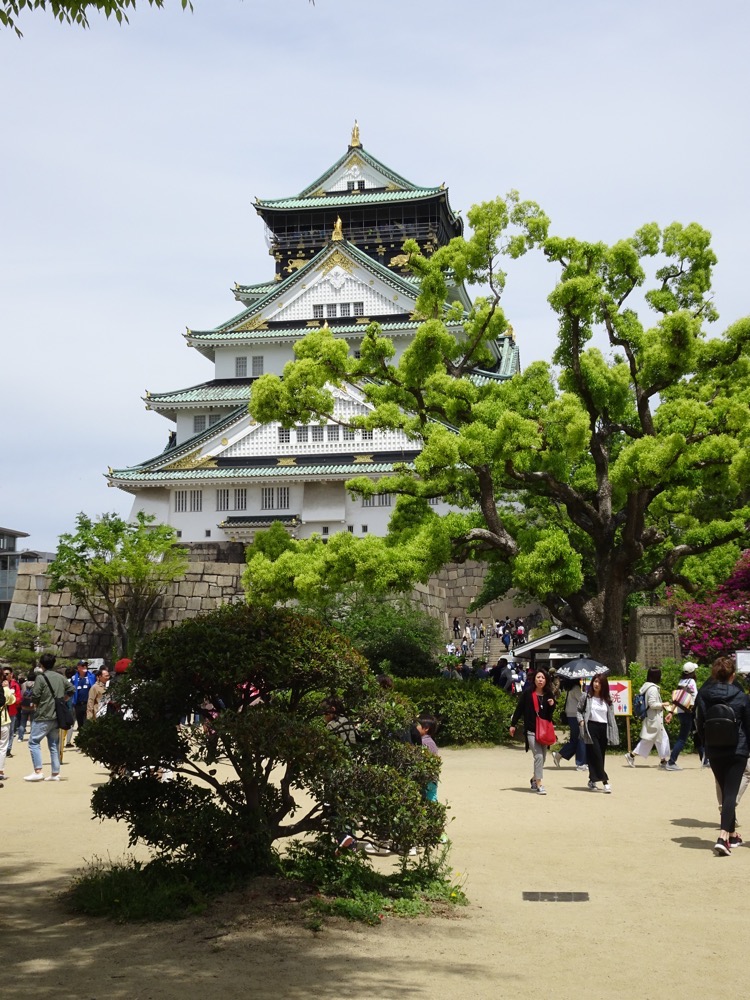
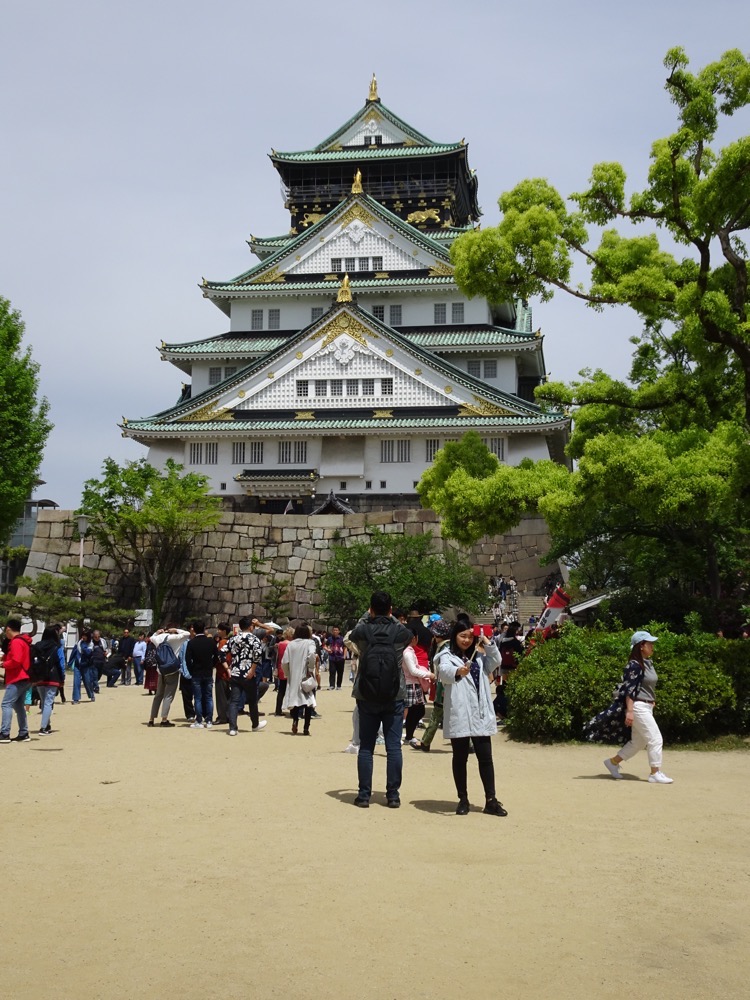 Now we were aware that the grounds of Osaka Castle has over 4000 cherry blossom trees, but we are considerably south now from Aomori and Hirosaki Castel, and the cherry blossom blooming has been and gone. The trees are all green and people will have to wait until next year to see these parks in all their glory. The only sign we saw at all that indicated how famous this site is for its blossoms was this dried arrangement that was outside a Moet et Chandon tasting tent. I can imagine it would be stunning, the flowers here being more of the pink varieties of cherry blossom rather than the later blooming ones in Aomori. Seeing how fleeing the flowering season is (barely a week this way or that) I feel doubly lucky to have spent such a fairy tale day on our anniversary enjoying a hanami picnic at Hirosaki last Wednesday.
Now we were aware that the grounds of Osaka Castle has over 4000 cherry blossom trees, but we are considerably south now from Aomori and Hirosaki Castel, and the cherry blossom blooming has been and gone. The trees are all green and people will have to wait until next year to see these parks in all their glory. The only sign we saw at all that indicated how famous this site is for its blossoms was this dried arrangement that was outside a Moet et Chandon tasting tent. I can imagine it would be stunning, the flowers here being more of the pink varieties of cherry blossom rather than the later blooming ones in Aomori. Seeing how fleeing the flowering season is (barely a week this way or that) I feel doubly lucky to have spent such a fairy tale day on our anniversary enjoying a hanami picnic at Hirosaki last Wednesday.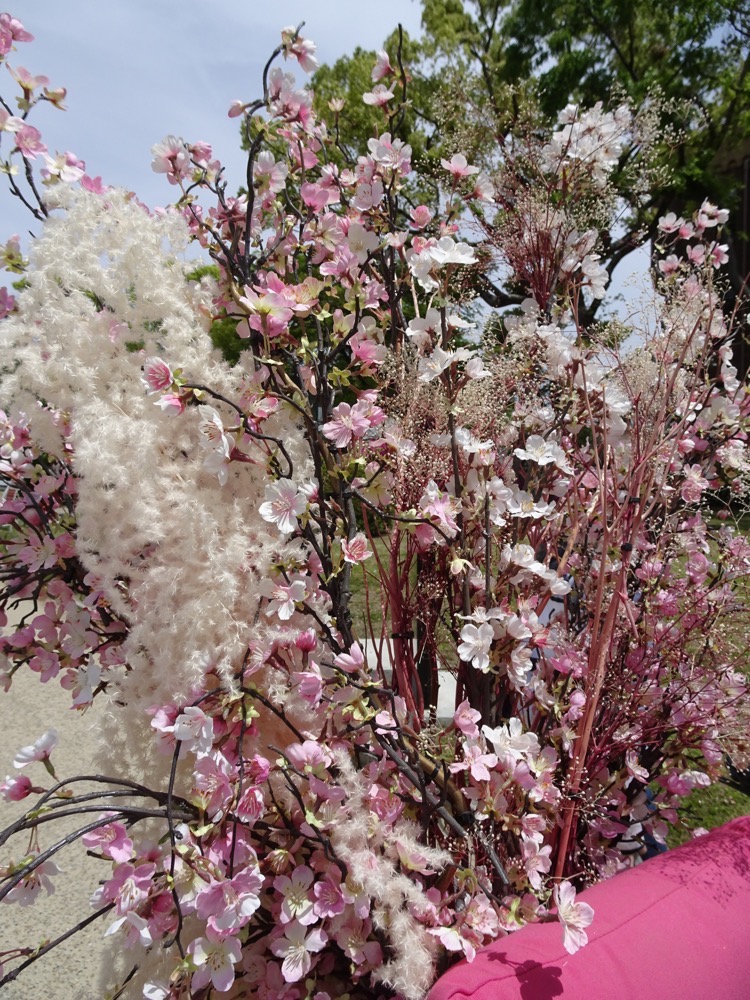 Also near the Main Tower is a large modern shopping centre full of restaurants and souvenir shops. Some of the goods for sale were stunning and some of them redefining ‘tacky’. We had a wander through the shops and stopped for a takoyaki snack. Takoyaki seems to be a local favourite.
Also near the Main Tower is a large modern shopping centre full of restaurants and souvenir shops. Some of the goods for sale were stunning and some of them redefining ‘tacky’. We had a wander through the shops and stopped for a takoyaki snack. Takoyaki seems to be a local favourite. 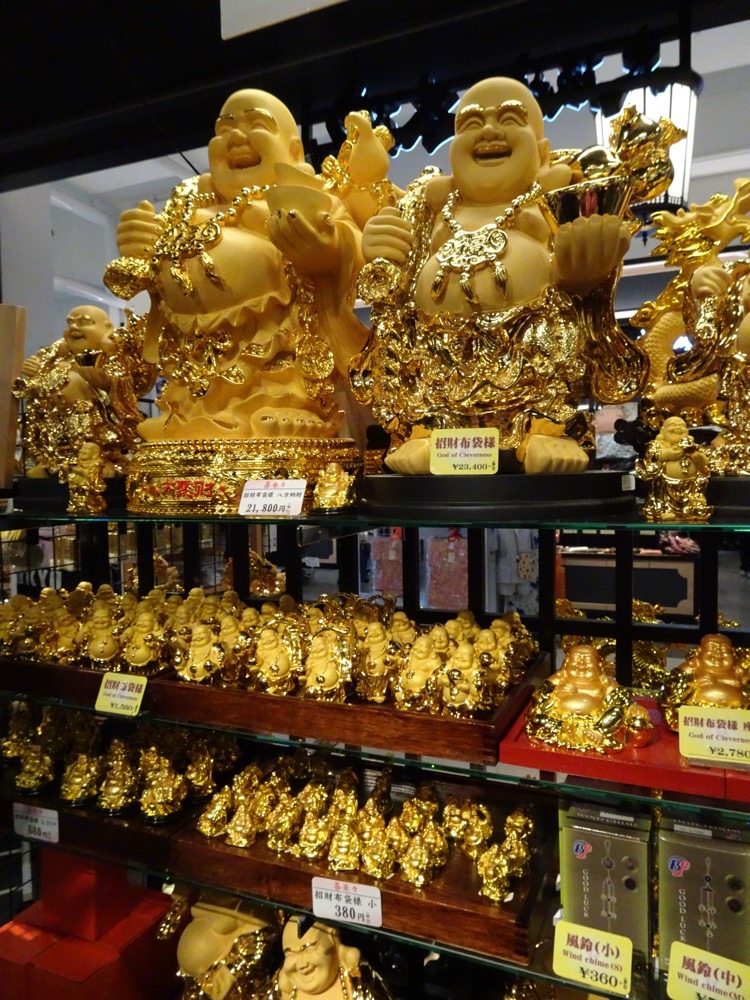
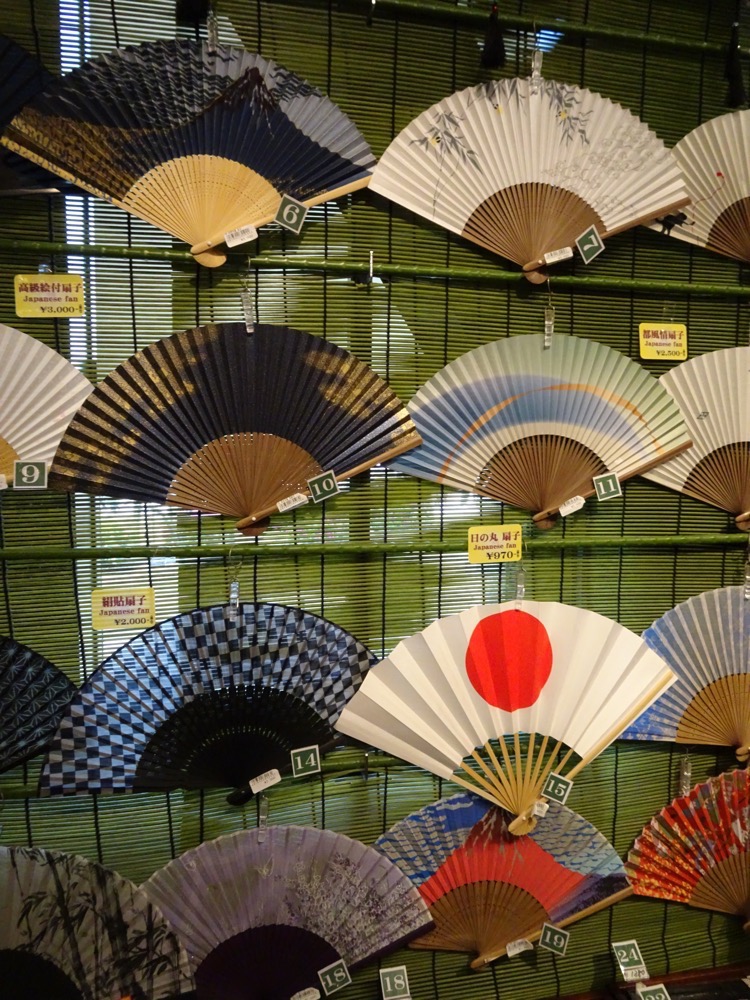 These are ceramic chopstick rests made to look like foods:
These are ceramic chopstick rests made to look like foods: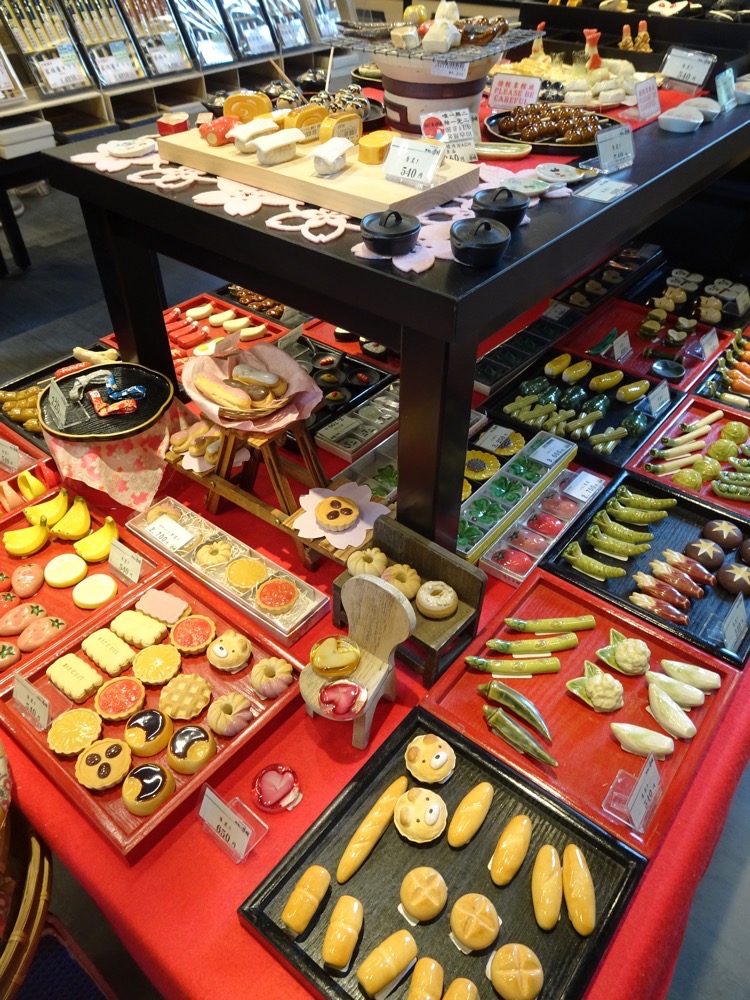 Weirdly, there was heaps of takoyaki designed souvenirs… with lots of happy looking squids and happy smiley balls of batter?!
Weirdly, there was heaps of takoyaki designed souvenirs… with lots of happy looking squids and happy smiley balls of batter?!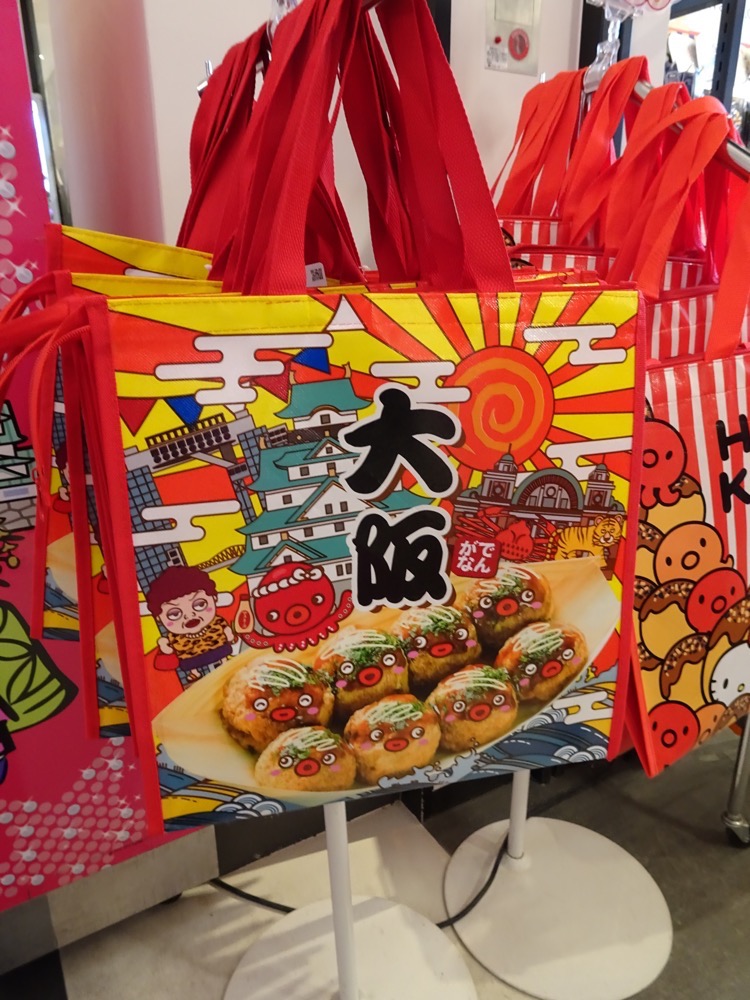
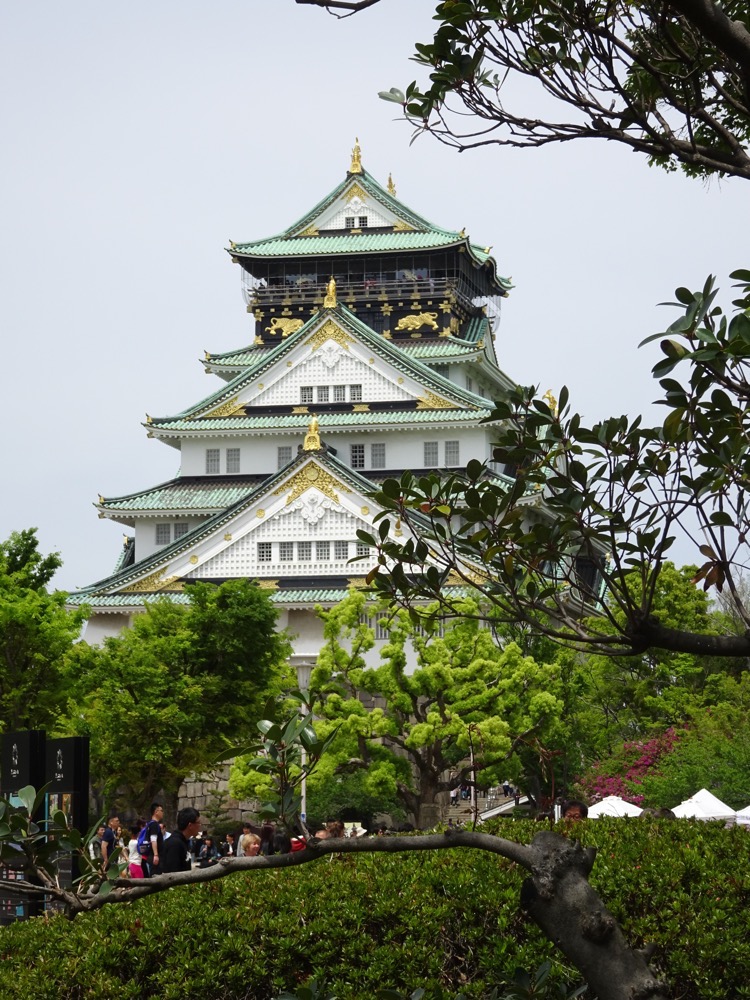
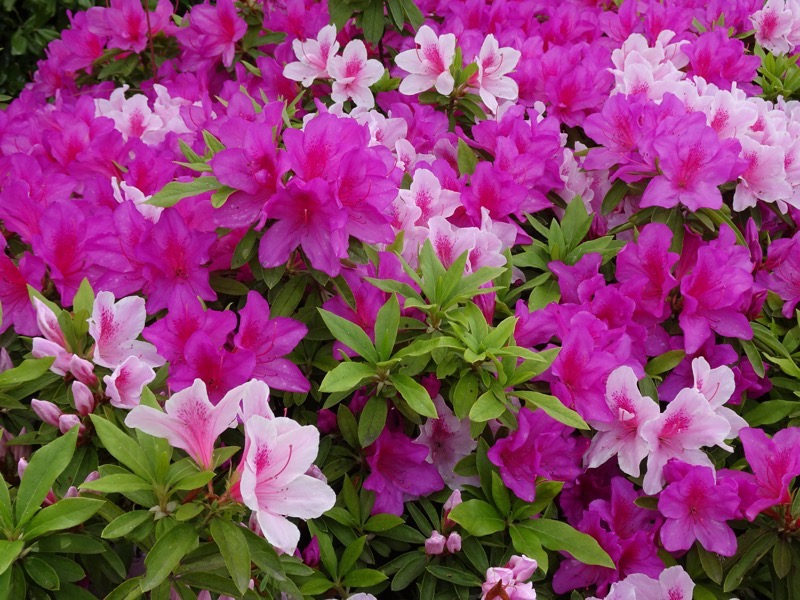
Directly across the road from the Osaka Castle grounds is the Osaka History Museum. The building on the left houses the museum and the building on the right is the Osaka television broadcaster in the building on the right with the entrance to both in the glass bubble.
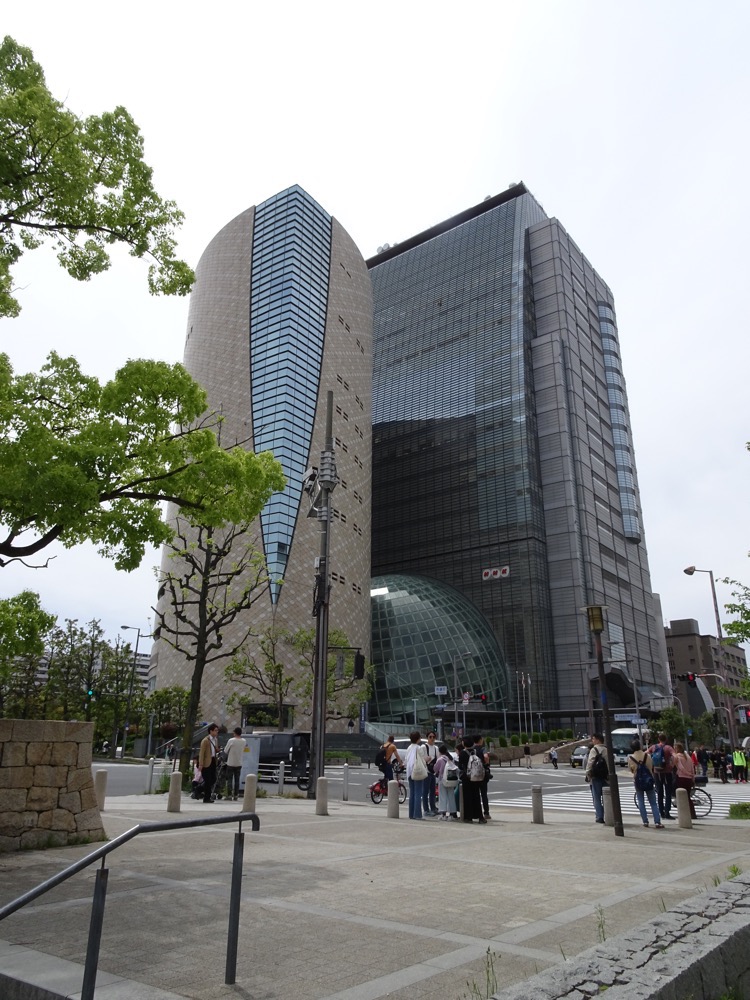 The museum was a lovely modern facility – you work your way down from the 10th floor which starts off talking about excavations of the 7-8th C Naniwa Palace and works it way down to contemporary Osaka as you move down the floors.
The museum was a lovely modern facility – you work your way down from the 10th floor which starts off talking about excavations of the 7-8th C Naniwa Palace and works it way down to contemporary Osaka as you move down the floors.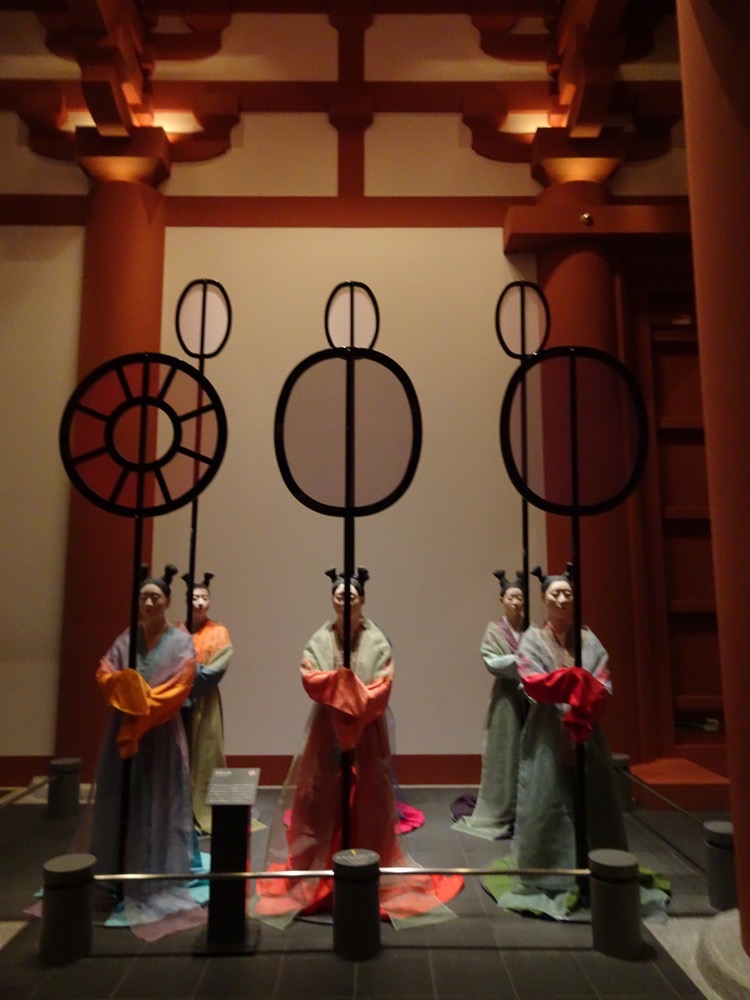 There are some gorgeous views from the upper floors of the Osaka Castle grounds and you can see really how imposing those moats were!
There are some gorgeous views from the upper floors of the Osaka Castle grounds and you can see really how imposing those moats were!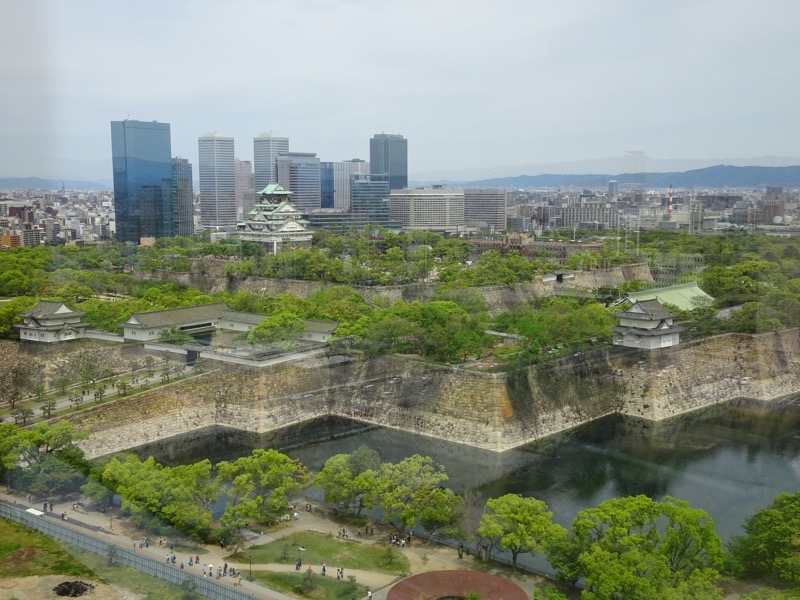
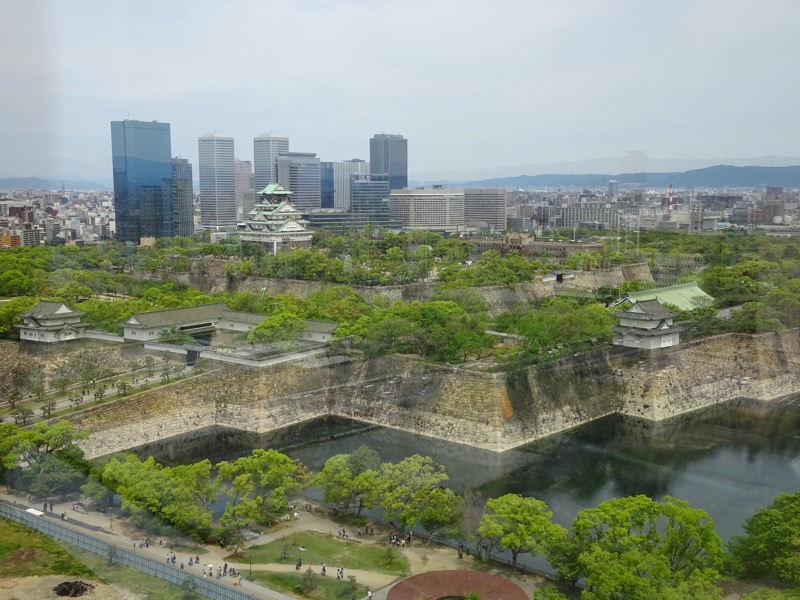 There were various displays of decorative arts – scrolls, paintings, ceramics, some artefacts from the earliest periods of the area. But I generally felt the museum was light on extant items and relied fairly heavily on interactive displays and recreated objects.
There were various displays of decorative arts – scrolls, paintings, ceramics, some artefacts from the earliest periods of the area. But I generally felt the museum was light on extant items and relied fairly heavily on interactive displays and recreated objects.
Votive Image of the Sueyoshi Family Ship, 1627.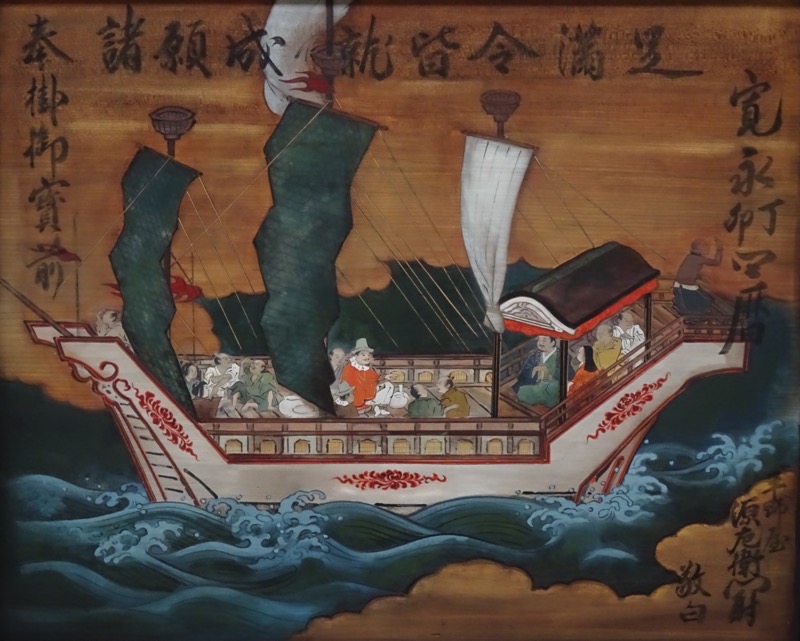
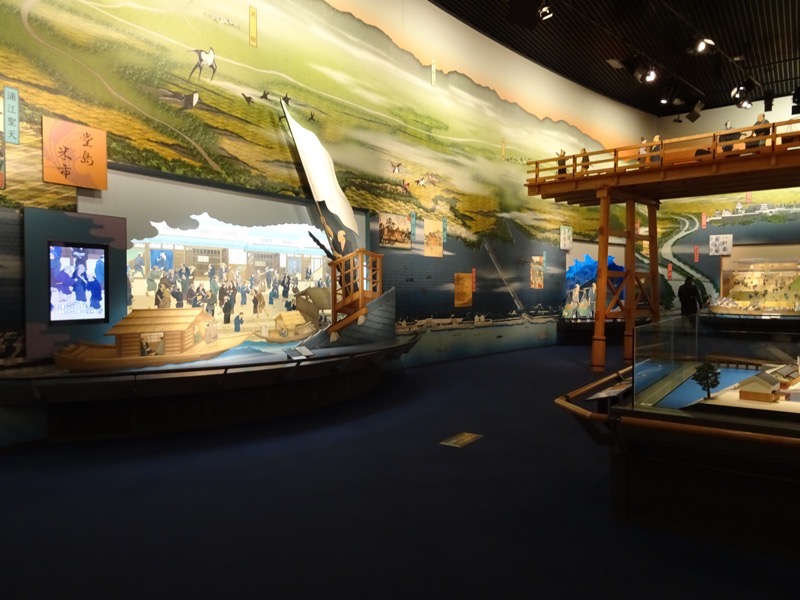
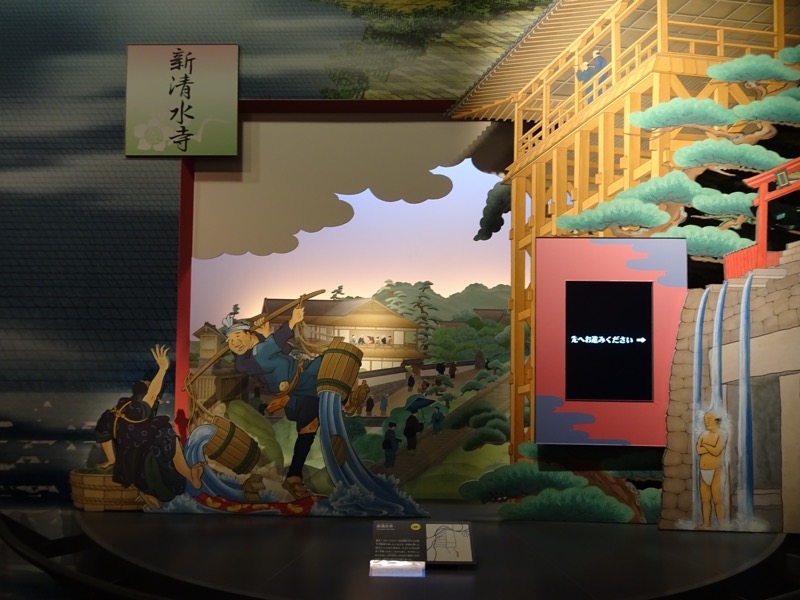
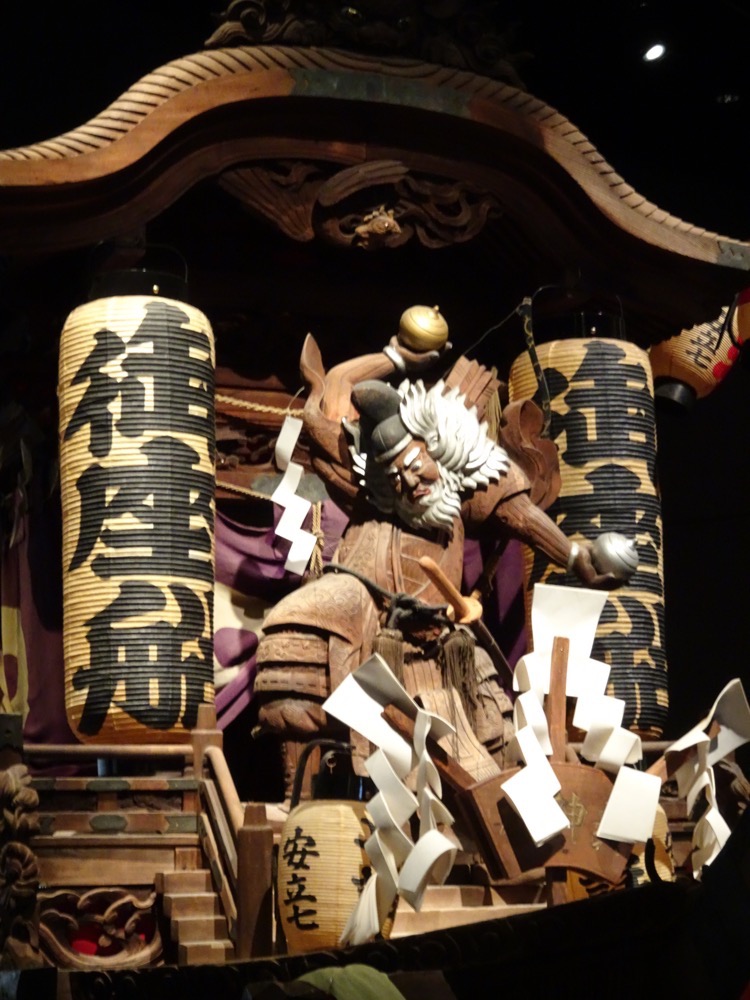
 Traditional writing desk for writers of the Bunraku puppet theatres:
Traditional writing desk for writers of the Bunraku puppet theatres: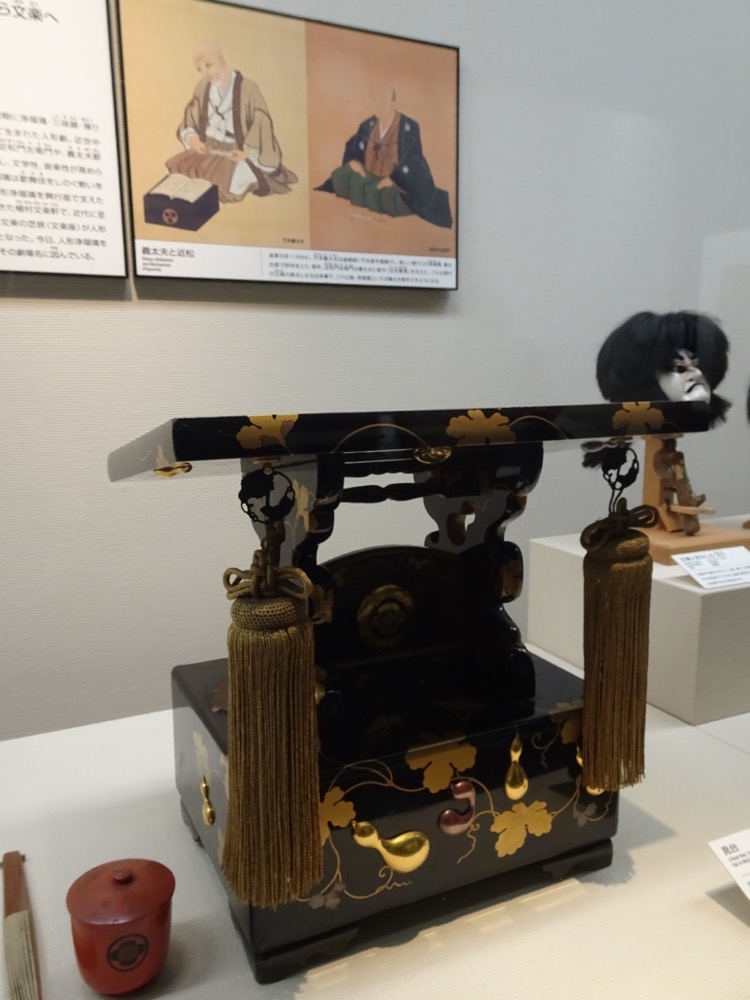
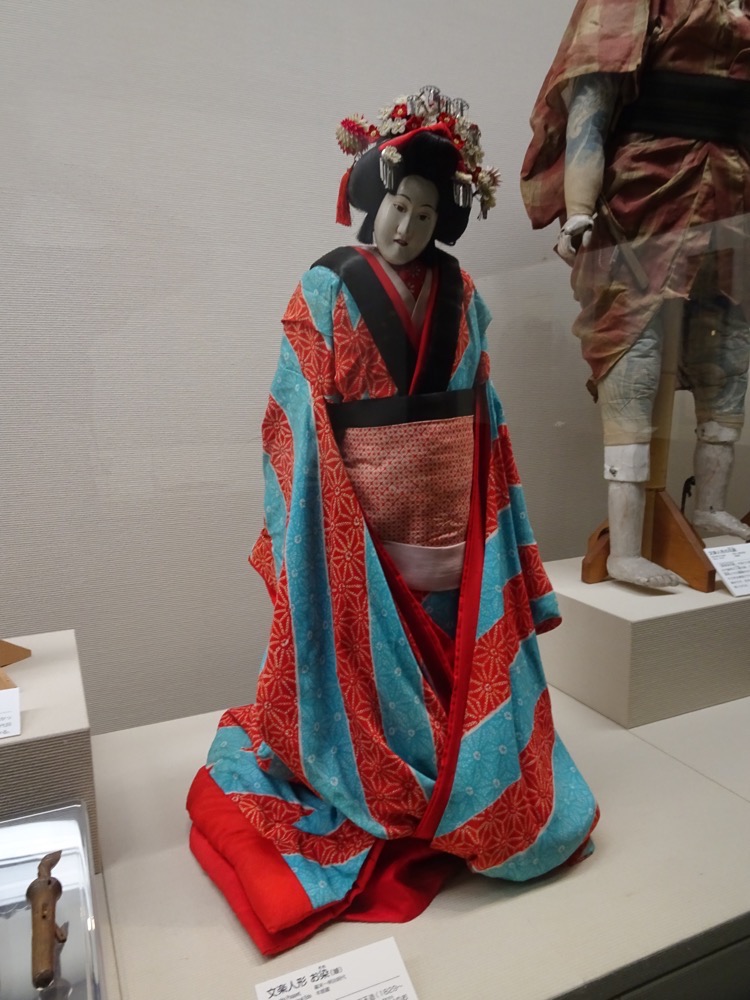 The Beauties by Tukioka Settei, 18th C.
The Beauties by Tukioka Settei, 18th C.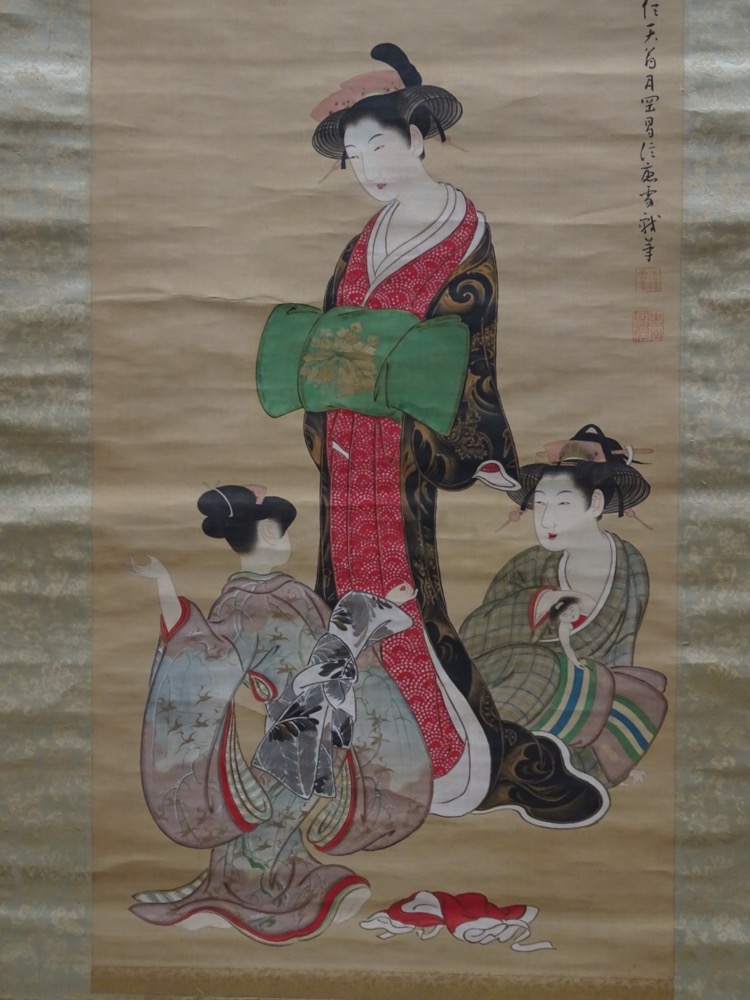 Apes and wasp by Mori Sosen, 18th – 19th C.
Apes and wasp by Mori Sosen, 18th – 19th C.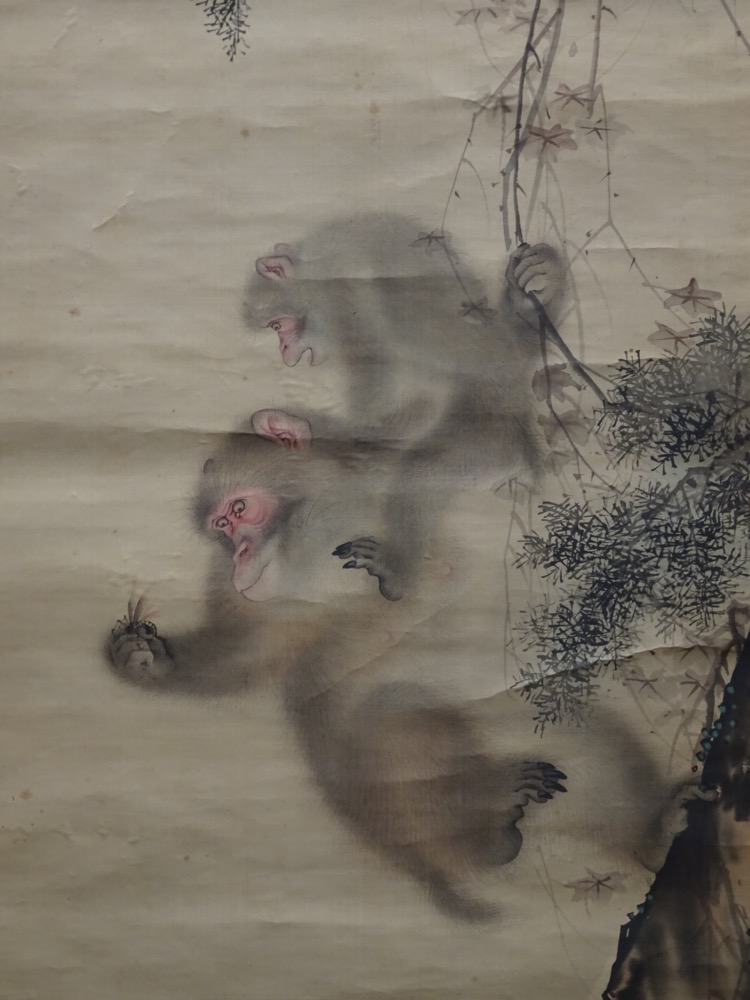 Funghi and Parrot by Mitani Totei, 18th C… though for the life of me I can’t figure out why there is an Australian sulphur-crested cockatoo depicted on an 18th C Japanese scroll!
Funghi and Parrot by Mitani Totei, 18th C… though for the life of me I can’t figure out why there is an Australian sulphur-crested cockatoo depicted on an 18th C Japanese scroll!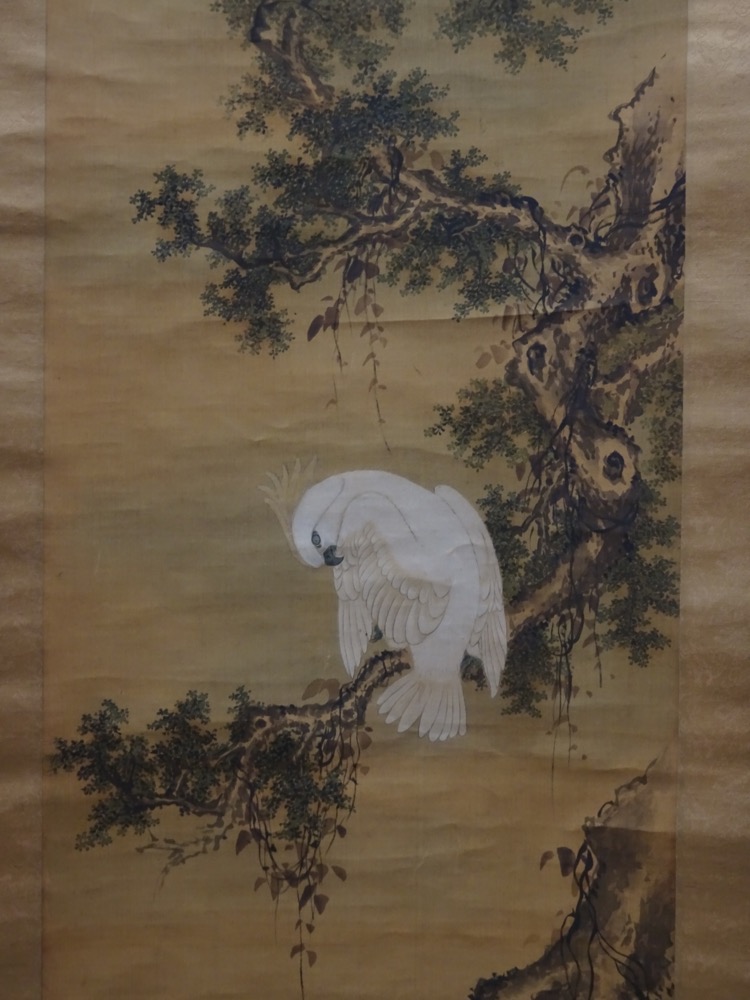
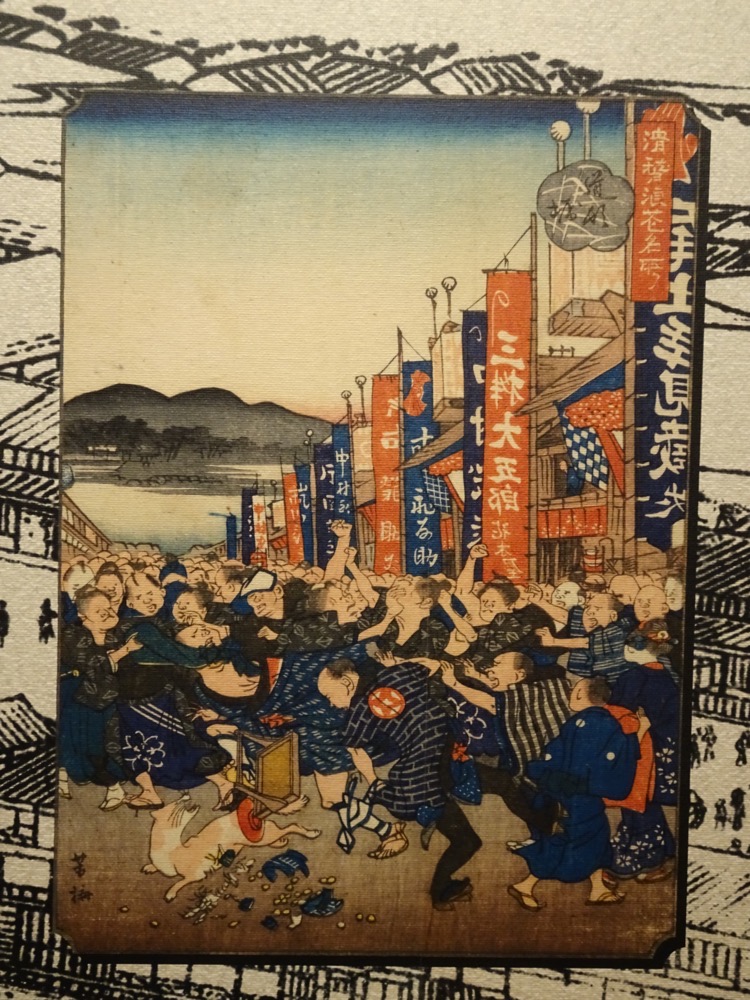
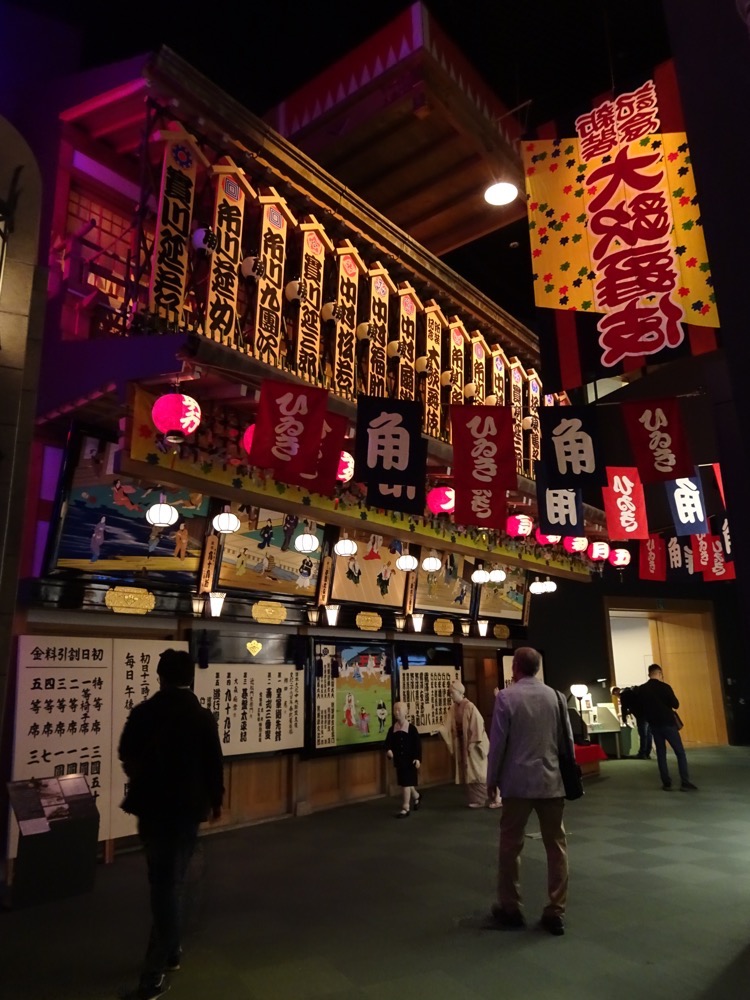 Flag with signatures for a Japanese soldier,1938.
Flag with signatures for a Japanese soldier,1938.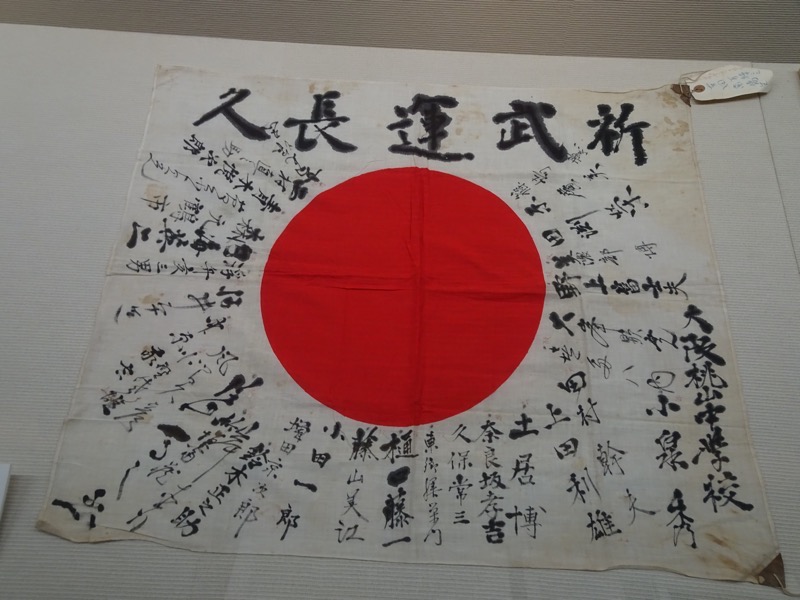
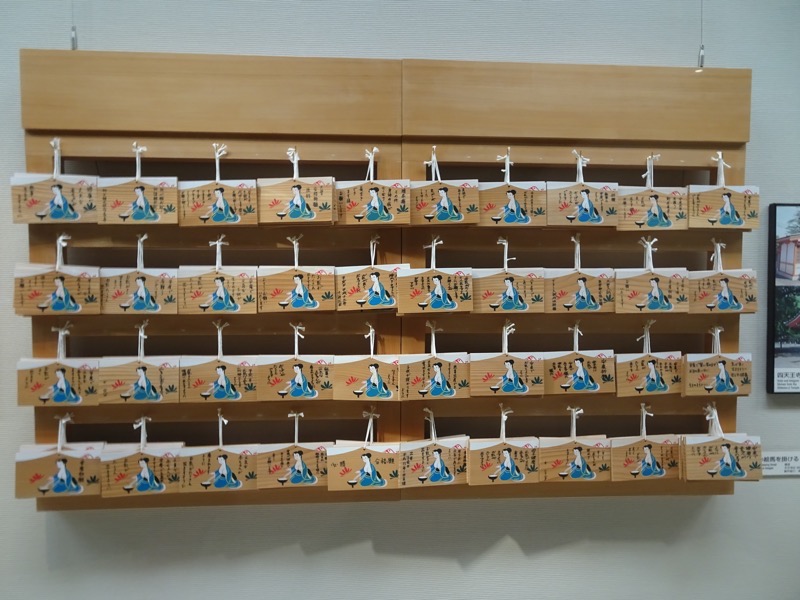 Votive plaques from the late 19th C.
Votive plaques from the late 19th C.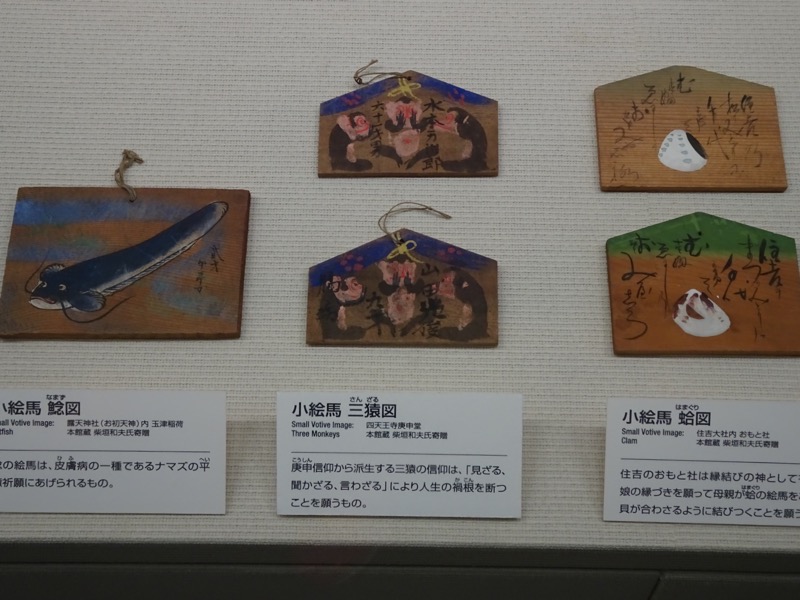
The 7th floor brought us into the 1940s? And the problem from there was that the 6th, 5th, 4th, 3rd, and 2nd floor were all empty and had no exhibits in them. Which was odd… I have a feeling this could be a great museum if they ever managed to fill it up? So it didn’t take us as long to peruse the museum has we had anticipated.
After this we decided to head down to the Namba district to do some shopping, and have a look around. We scouted out somewhere to see a movie, found some great restaurants to try later in the week and then called it a day. Back to the hotel to chill for the afternoon (read: do some work!)
